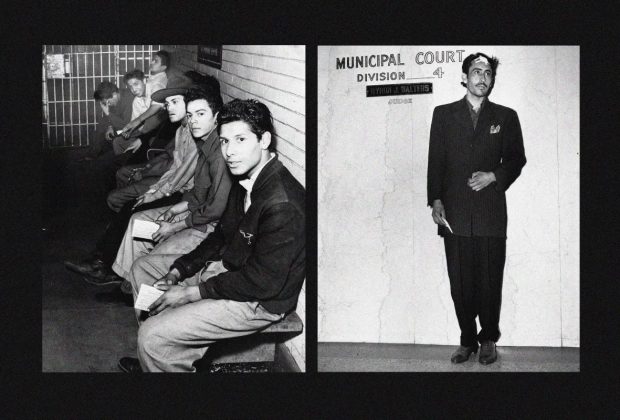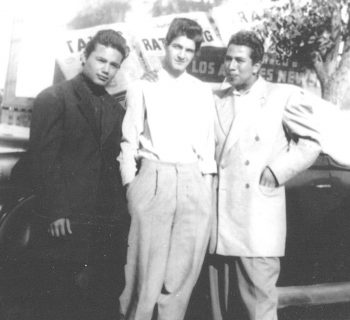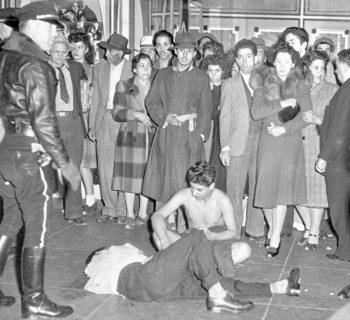By Fidel Martinez | Los Angeles Times | JUN. 8, 2023 | File Photo from LA Times
They were targeted and beaten. Stripped of their prized garbs and brutalized in the streets.
This June marks the 80th anniversary of the Zoot Suit Riots, a dark period in Los Angeles and American history in which young Mexican, Filipinx and Black men and boys were attacked by servicemen and white Angelenos, driven by racial and anti-immigrant animus, throughout the city over the course of a week.
To commemorate this event, a group of Times journalists and editors put together this vital story package.
“The cliche about history repeating itself if history is forgotten is true, but exploring history isn’t just recalling the past,” said Column One editor Steve Padilla, who oversaw the project.
“It’s important to show how the past informs the present, and that was one of the goals of our stories on the Zoot Suit Riots. Another motivating factor behind our work: After 80 years, the riots simply are not as well known as they once were.”
He’s not wrong.
Growing up in Texas, I didn’t learn about the Zoot Suit Riots in school — this isn’t particularly surprising given how much of U.S. Latinx history is still kept out of high school textbooks. My first exposure to this historic event came through the 1992 film “American Me,” which devotes a nearly six-minute montage to the white rage the parents of the protagonist endured. It wasn’t until college, when I took a course titled the History of Mexican Americans Since 1848 that I began to learn the extent of what transpired.
Central to The Times’ package is this comprehensive timeline compiled and written by multiplatform editor Christian Orozco, which not only outlines the events that took place, but also where. It connects the occurrences of that week with other historically relevant events like the Pearl Harbor bombing and the Sleepy Lagoon trials that fed into the racial violence.
Orozco did a fantastic job of digging through the archives, including our own coverage that further fueled the violence.
“Sadly, one of the many newspapers cheering on the marauding servicemen was The Times,” said Padilla, noting that an editor had brought up in an early meeting that “unlike other civil disturbances in American history,” this dark stain was “essentially state-sanctioned chaos.”
“It was only proper, and honest, to detail our own complicity.”
Padilla also shared that several Times staffers had a personal connection to the Zoot Suit Riots.
“One reporter said his father bought a zoot suit, only to have his father cut it up with scissors,” he said. “My own father once told me he had wanted a zoot suit, but his mother wouldn’t allow it. Good thing, too. Dad recalled seeing servicemen beat up a zoot suiter on 4th Street in Boyle Heights.”
Another key component of the package is this Column One written by Gustavo Arellano, which recounts the often overlooked support given by the Black Angeleno community. It’s an aspect of the riots I personally knew very little about.
“The leaders of the Black community really seemed to understand that they weren’t safe just because they weren’t the primary target,” Kevin Leonard, dean of the College of Arts and Sciences at Southern Illinois University Edwardsville, told Arellano. “They connected it to Black experiences in the South. As long as people were allowed to be scapegoated or turned into victims of violence, then no one was safe.”
I implore you to read through the stories, even if you think you knew everything there was to know about the Zoot Suit Riots. I’m willing to bet that you’ll learn something new. I certainly did.
And finally, I do want to reiterate my colleague Steve Padilla’s sentiment that history is bound to repeat itself if forgotten. Though the Zoot Suit Riots took place 80 years ago, the marginalization and targeting of minority communities are very much still alive.






